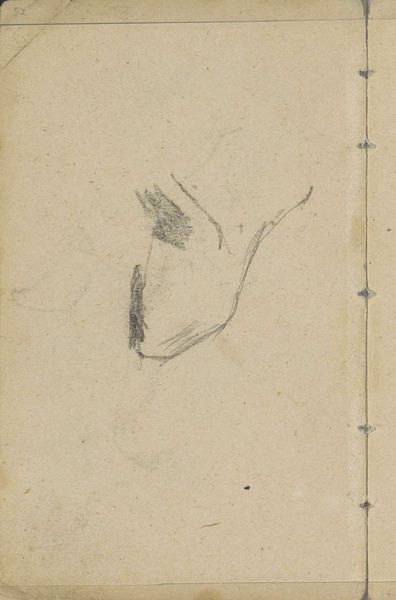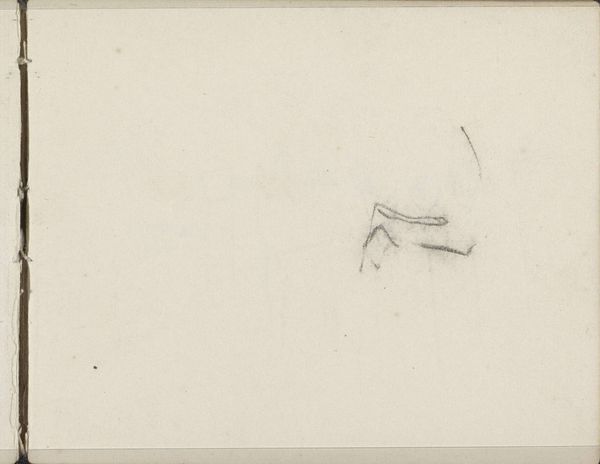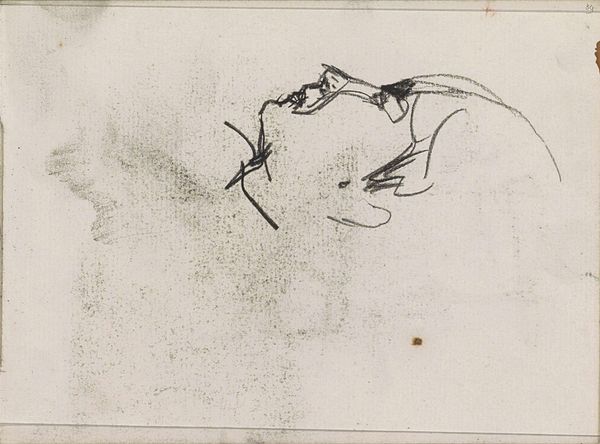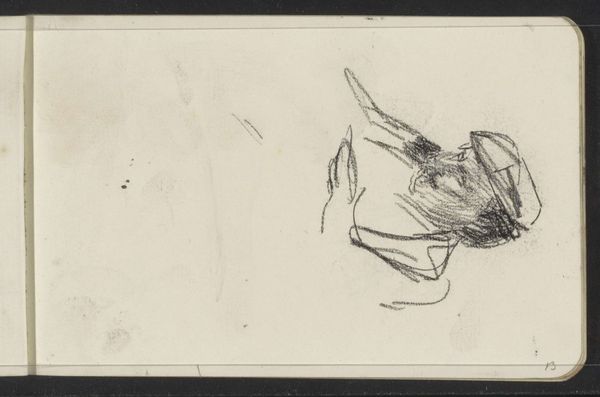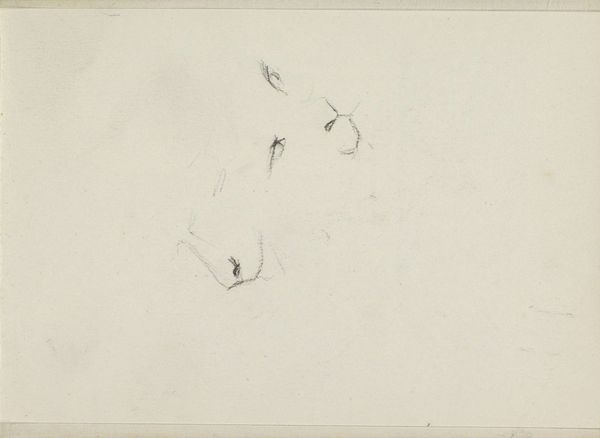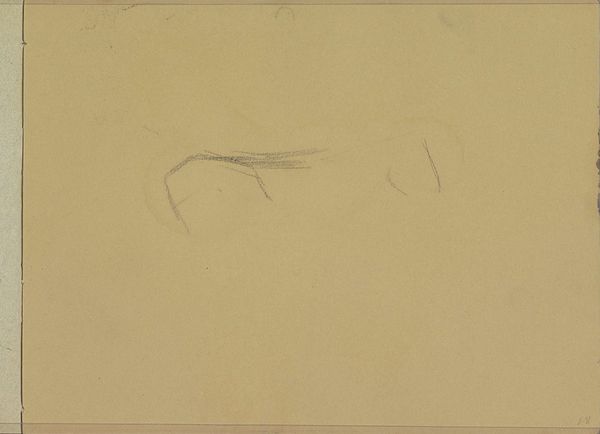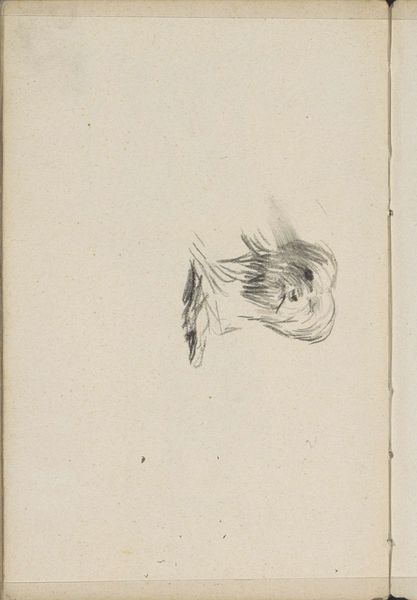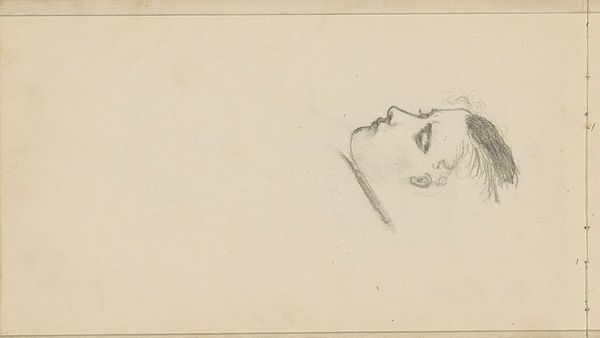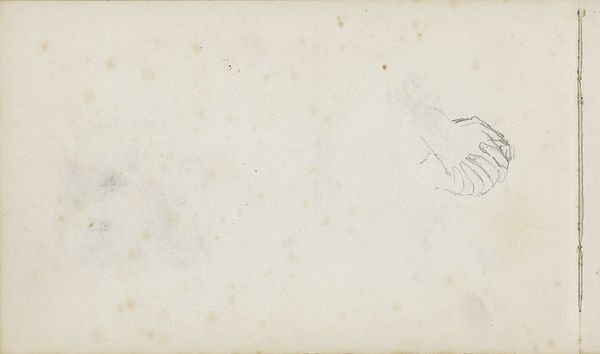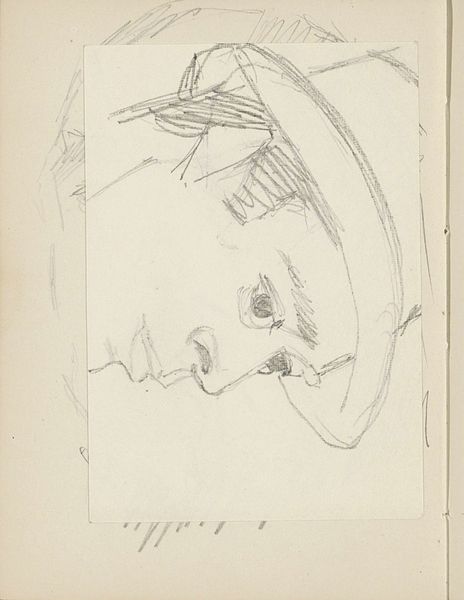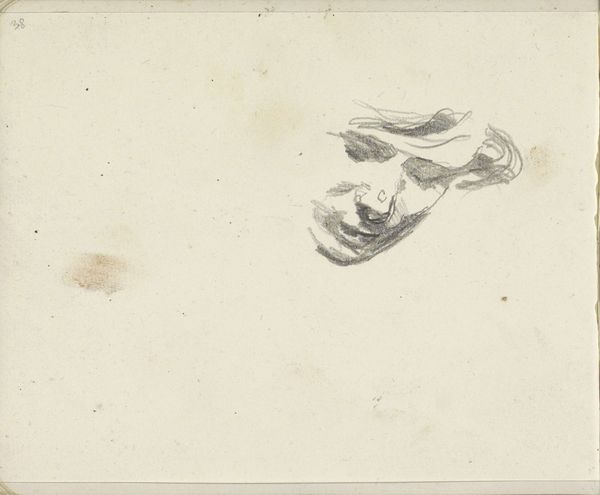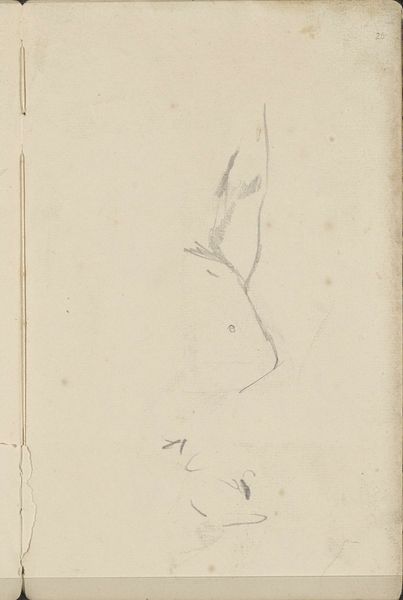
Copyright: Rijks Museum: Open Domain
Curator: Breitner's "Gezicht, in profiel," or "Face, in Profile," dates roughly from 1886 to 1903. What strikes you about this particular pencil drawing? Editor: Rawness. Definitely raw. It’s a whisper of a face, quickly captured, almost hesitant. I imagine Breitner quickly sketching someone who didn’t know they were being watched. Curator: Precisely! It's from a sketchbook. You sense that intimacy immediately, don't you? Breitner's known for these candid glimpses into daily life. He wasn't trying to create a polished, finished product here. Editor: Which makes it even more powerful. The barest hint of the nose, the curve of the cheek... it tells us so much about the artistic process, about the way we perceive each other. Were these sketches preparation for his larger works, perhaps? Curator: Some likely were. He was constantly observing, always sketching. And considering his interest in the working class, the women especially, it invites considerations of power and representation, no? He gives them such focus without making them overly vulnerable. Editor: True, there's a remarkable balance here. We're given access, but on Breitner's terms, which, in a broader sense, echoes the male gaze that defined art in that era. How do you see that playing out? The profile itself almost serves as a screen. Curator: That's an astute observation. It shields the subject, certainly, maintaining a sense of her own interiority even as we, the viewers, try to understand her world through Breitner’s eye. He almost acts like a conduit. I'm always caught up on how simple the construction of that image really is though, and yet the form exists! Editor: Yes! Like peering through a keyhole. There’s so much implied, suggested. It also highlights the artist's choice, the perspective, whose gaze we're invited to share. Curator: Ultimately, for me, it is a study of perception and that is how it feels both incredibly modern and rooted in its time. Editor: For me, it is an echo that carries whispers of past lives and offers us insights on who holds the keys to interpreting such stories.
Comments
No comments
Be the first to comment and join the conversation on the ultimate creative platform.
